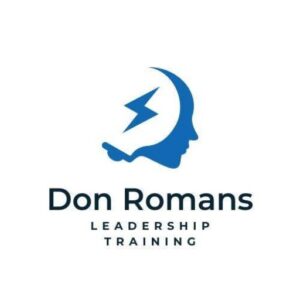In the contemporary world, professional representation of one’s skills and experiences plays a pivotal role towards landing a desirable job or role. One of the popular elements often used for this representation is a personal documentation, which comes in two primary forms – a CV (Curriculum Vitae) and a Resume. These two documents, while often used interchangeably, have distinct differences in structure, content, usage, and even geographical preference. In this discourse, we will delve into understanding the basics of these two documents, highlighting their structural and content differences, and exploring the benefits and limitations of each concerning specific circumstances.
Understanding the Basics
Understanding CVs and Resumes
CVs, or ‘Curriculum Vitae’, and resumes are both essential tools used to showcase one’s skills, experience, and educational background, primarily meant to secure job opportunities. However, they differ significantly in structure, content, and usage. CV, a Latin term which translates to “course of life”, is a comprehensive document that provides an in-depth detailing of a person’s professional journey. It includes academic credentials, research works, publications, awards, honors, and other relevant career-related information. CVs are typically multiple pages long with no set length limit. The usage of CVs is common in the United Kingdom, Europe, Asia, and Africa, where it is primarily used in job applications, particularly in academic, scientific, and research-based roles.
On the other hand, a resume, derived from the French word meaning “summary”, is a concise document that typically caps at 1-2 pages. Compared to a CV, it provides a crisp synopsis of a person’s skills, experiences, and accomplishments pertinent to the targeted job profile. Rather than a complete catalog of one’s professional life like a CV, resumes are tailored for each job application to highlight relevant skills and experiences. In the United States, resumes are the prevailing document for job applications, best suited for industry, corporate, and hourly job sectors.
Deciding Between a CV and Resume
The choice between a CV and a resume hinges on the job’s geographical location and the specific requirements of the role. A CV, short for “Curriculum Vitae,” is usually preferred for academic or scientific positions in locations like the UK, Europe, Asia, and Africa, and for any job that explicitly requires it. Conversely, for roles within the US, particularly those outside the academic realm, a resume is generally the norm unless specified differently. Regardless of which document you opt for, it’s crucial that it accurately displays your skills, experiences, and achievements most pertinent to the job you’re applying for.

Structural Differences
Comparing Structure: Resume vs. CV
A Curriculum Vitae, abbreviated as CV and stemming from the Latin term for “course of life”, is a thorough document showcasing an individual’s complete career trajectory. This comprehensive layout often includes sections uncommon in resumes, such as a detailed bevy of academic experiences, multiple publications, and a record of attended conferences. In order to maintain neat organization, these comprehensive elements are traditionally ordered in chronological fashion.
Contrarily, a resume presents as a far more concise document, typically extending to only one or two pages in respect to the individual’s degree of career experience. A resume’s primary function is to briefly illuminate the candidate’s pertinent skills, experiences, and qualifications for a specific role. Because resumes are generated by professionals to align with certain job applications, their structure tends to be highly adaptable. Therefore, while resumes and CVs do share some basic commonalities (such as contact information, education, and employment history), the depth of detail and customization within each document varies considerably.

Content Differences
Distinguishing Between the Content of CVs and Resumes
A Curriculum Vitae or CV functions as a comprehensive report detailing a person’s overall professional journey. It incorporates a thorough overview of your academic and occupational history, typically presented in reverse chronological order. The document contains extensive information, including your educational background, academic accolades, scholarships, related courses or certifications, work history in detail, research involvement, publications, presentations, teaching experience, awards, associated memberships and even references, if requested.
Conversely, a Resume is a condensed document specifically designed to target the skillsets and experiences directly related to a particular job offering. This makes it a customised summary of your professional experience. Resumes tailor their content to the specific job role you’re applying for and focus significantly on the relevant skills and experience you possess. For example, if you’re applying for a financial manager role, your resume would be engineered to highlight your expertise in finance, management, and other related fields, minimising emphasis on unrelated job experience. Unlike a CV, a resume generally extends to a maximum of two pages, excluding any information not directly related to the applied job. The motive of a resume is to quickly catch the employer’s attention through a concise, well-structured and appealing document.
To summarise, the main differences between a CV and a resume revolve around the level of detail, the range of information, and the purpose of these documents. A CV can be considered a comprehensive account of your professional journey, whereas a resume is more akin to a specifically designed advertisement of your skills and experience tailored to a particular job role.

Photo by amyhirschi on Unsplash
Exploring the Benefits and Limitations
Tactical Advantages of Using a CV vs. a Resume
Curriculum Vitae (CV) is an ideal tool for professionals in the fields of academia, medicine, and scientific research. It provides a comprehensive illustration of an individual’s extensive academic journey, including degrees, certifications, publications, presentations, affiliations, and an elaborate description of their previous duties and responsibilities. This holistic portrayal of the applicant’s proficiency makes it preferred when applying for roles within these particular fields. However, due to its exhaustive detail, a CV can extend to several pages. This might be viewed as a disadvantage as it can be time-consuming to both prepare and for the reader to review in entirety.
In contrast, a Resume is designed for corporate or entry-level positions. It offers a succinct overview of the candidate’s skills, experiences, and achievements. Typically limited to a maximum of two pages, the concise nature of the resume is beneficial in bustling industries where hiring managers make quick scanning of an application. Despite being condensed, the Resume aims to showcase the candidate effectively. However, the downside to this method is the constraint on expressing extensive details due to the limited length.
In conclusion, the choice between a CV and a Resume largely depends on the type of job one is seeking. An applicant must understand the potential employer’s expectations and select the document that appropriately suits the job requirements. Regardless of the format, both documents aim to showcase the candidate’s abilities, qualifications, and experience.

Candidly, both CVs and Resumes have unique merits and potential drawbacks, making neither superior to the other. Their efficiency is largely tied to the given context – be it the applicant’s career stage, the industry, or the geographical location. Ultimately, the most effective document is the one that accurately presents a candidate’s qualification in the most relevant and concise matter. As job seekers or professionals desiring career growth, the understanding and right application of these documents is cardinal. It’s advisable to take time to consider the requirements of each opportunity and choose the documentation – be it a Resume or a CV – that will best allow you to present your achievements and potential.

